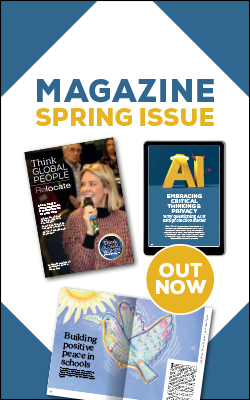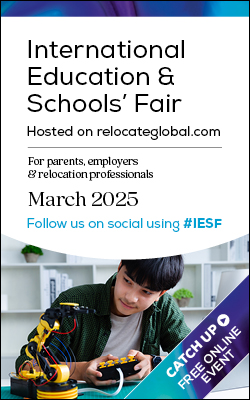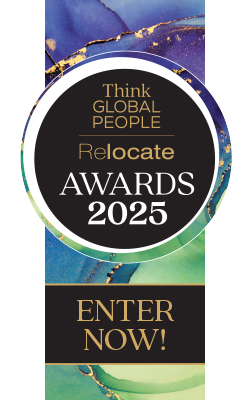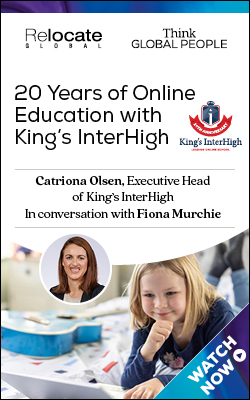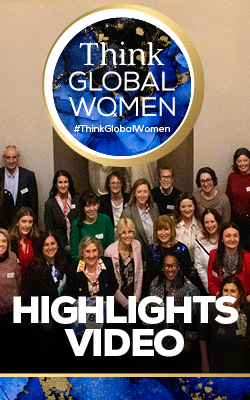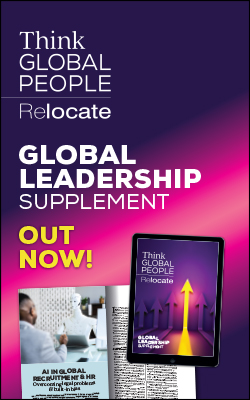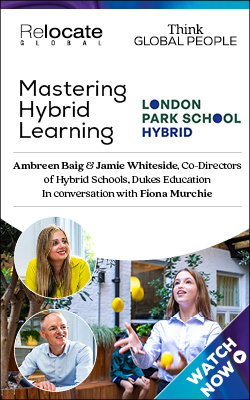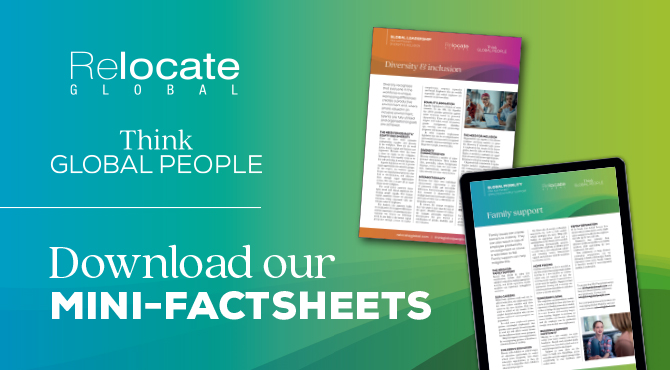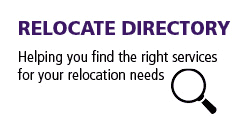How AI is augmenting education
Enough has been written about the potential of AI but how is the technology being put into practice by schools and colleges? We went to learn more at BETT.

This article is taken from the Spring 2025 issue of
Think Global People magazine
View your copy of the Spring 2025 issue of Think Global People magazine.AI is being used to transform different areas of education, from evolving classroom practices to improving literacy and inclusion.A panel moderated by Duncan Verry, Bett Portfolio Director at Hyve Group, covering many sectors across education, from international development to technology providers, pedagogy specialists and technical colleges shared what they think are the most valuable and exciting opportunities for AI in education.
The panelGeoff Stead, Chief Product Officer, MyTutorJulie Kapsalis, Principal & CEO, North East Surrey College of Technology (Nescot)Thomas Davin, Director, UNICEF Office of Innovation, UNICEFDr Fiona Aubrey-Smith, Founder, PedTech |

On widening access to education
Starting with an international perspective, UNICEF Director, Thomas Davin, briefly discussed AI’s role in helping to close the education gap and provide education at scale.“Globally speaking, systems are failing children. 70% of 10 year olds who are in school cannot explain and fully understand the text that they read. There is a major learning poverty for children who are attending school, not to mention the 250 million children not going to school today. We’re looking at AI and we are very bullish about it as an opportunity for both teachers and students,” he said.Julie Kapsalis, who heads up Nescot, a technology college supporting over 7,000 learners, and sits on the board of Artificial Intelligence in Education, shared how AI and immersive experiences are enabling inclusive learning.“My passion in all of this is the role that AI and VR can play in helping to widen participation in education and improve accessibility. I’m also very interested in how it can de-risk situations and take learners into environments that we couldn’t do previously and how that opens their eyes to their potential and the opportunities in the world of work.”Kapsalis continued with some rich and current examples of how AI and VR is opening up learning at her college.“I think you need to hear about our plumbers. I have to confess, when as a college we started to invest in immersive classrooms and VR, I never thought our plumbers were going to be the pioneers but I was wrong. It has been so inspiring working with our teaching and learning coaches who saw the potential of using VR and immersive spaces. Teaching someone plumbing is very expensive – the cost of the materials, the cost of the copper. When you’re learning how to bed the pipes and you make a mistake, that costs a lot of money. If you can train that virtually to reach a level of competence and skill before students go into the workshop, that’s a huge cost-saving.”But it’s not just about the cost, added Kapsalis. “We work with learners who may suffer a lot from anxiety and don’t want to show themselves up in front of their friends, or perhaps struggle with maths. Any good plumber knows maths is a key skill when you're getting angles right to bend the pipe and what we’re finding is that this method provides a safe, lower-risk environment for our students to learn.”The department is now working together with industry bodies like the Chartered Institute of Plumbing & Heating Engineers to develop content, so students can take apart a ground source heat pump virtually. “It’s just so much easier, lower risk and cheaper in these AI-enabled settings. But for me, it’s ultimately about widening participation.”Technologist Geoff Space gave some further examples of how AI is being used to widen participation. Referencing a World Bank report, he discussed how AI tutors are being successfully trialled rurally across countries in West Africa.On supporting teaching, learning and accessibility
Pedagogically-led technology expert Dr Fiona Aubrey-Smith raised the importance of a pedagogy-first mindset.“We’re all on a bit of a journey, and that’s one of the most exciting things about AI. We are seeing some threads and trends in schools and they are commonly oriented around giving different stakeholders (children, teaching assistants, teachers and leaders) more of the things that they need to be the professional they want to be. Using generative AI to help with lesson planning, or interventions is not only saving time – that's creating capacity for teachers and teaching assistants to provide more human time with their learners. That’s ultimately why we all want to be in education, to do that human work with young people.”Aubrey-Smith also discussed how AI can be used to optimise learning. “Across lots of the schools and learning organisations I work with, one of the interesting things that has come out is the way that generative AI is being used to break down what type of learning is being accessed. It might be something in visual or video form instead of text, simplifying text, or something personalised and specific to an education intervention need, so it’s challenging us all to really think about what accessibility means in education. Is it accessibility of a physical barrier, social barrier, an emotional barrier or a task barrier? There are lots of different challenges for different people to overcome and I think [AI] can encourage us to be more creative in our approaches.”Read related articles
- What does AI-powered pedagogical transformation look like?
- Embracing a human approach to AI
- Exploring AI in international schools
- AI and inclusion in tech
- AI in education
On developing AI tools for education
Space spoke on the challenge of contextualising tech innovations and AI for learning and education and talked about AI as a collaborative partner.“Building technology requires multiple iterations. You have a vague idea, you learn, you iterate again. So it starts off with the idea that it's not going to be right, but it’s going to be a bit better with every iteration,” explained Space.“I think one of the challenges in adopting technology for a traditional education environment is there is the assumption that it works. You don’t take it onboard until it does work and you want to be sure it works. But, by the time you’re sure of it, several generations of that tech have passed by, especially with AI which has quite fundamentally changed again. I’m a massive fan of educators being part of what you build. But equally, we need to try and find the culture in schools to accept experimentation and expect some element of failure as everyone works together to try and make this right.”The only problem is that AI is evolving fast, added Space. “We’re in a situation where the concrete hasn't really settled yet and the foundations are still fluid and loose. If we wait for a year or two, until all the studies show that it’s fine, the foundations will be rock solid. Now is the time for educators and technologists to really work together to shape it. It’s quite a powerful moment.”On AI use and adoption outside Europe
“The appetite to use AI is extremely strong, maybe counterintuitively, because in the Global South for instance many are still not digitally connected,” said Davin. However, a key motivator for many countries wanting to adopt AI is to improve the learning poverty in their respective countries.“I was talking to the Minister of Togo recently about the use of AI. Someone from the audience raised some concerns about the risks of using AI and he responded that the learning poverty there means that 9 out of 10 kids are not learning what they should be at school – so he’s ready for risks if that’s the alternative.”On using AI and VR to prepare students for work
Kapsalis discussed how AI and immersive experiences are helping to prepare her students for work.“Sometimes, just taking a group of learners into a work environment can be very high risk. It can also be very expensive, even just the most basic things like £300 to hire a coach can be a barrier. What we’re doing is working with employers and using 360 degree cameras to film those real work environments and bring them back to our Igloo - an immersive 360 degree projection pod. We’ve got some incredible content from the RAF Police, where learners can be in the environment of an aircraft carrier – we just couldn’t do that everyday. We even have site managers taking our learners through these high-risk construction sites.”She also demonstrated how her college is using technologies to inspire creativity with immersive creative writing classrooms.“I had the privilege to sit in a GCSE English class the other day, where students had to do some creative writing about a storm. Students were placed into a storm in our Igloo and the language and creativity produced was incredible. I don’t think you would have got that in a traditional classroom setting. So for me, accessibility means many things. Ultimately, it’s about making our learners have those rich experiences to believe in themselves and bring out the talent that’s within them.”Did you know?57% of teachers are using tools like Chat GPT for school work11% have used an AI tool in a lessonOnly 31% haven’t used AI at allSource: Teacher Tapp |




Find out more about the Think Global People and Think Women community and events.

Subscribe to Relocate Extra, our monthly newsletter, to get all the latest international assignments and global mobility news.Relocate’s new Global Mobility Toolkit provides free information, practical advice and support for HR, global mobility managers and global teams operating overseas.
©2025 Re:locate magazine, published by Profile Locations, Spray Hill, Hastings Road, Lamberhurst, Kent TN3 8JB. All rights reserved. This publication (or any part thereof) may not be reproduced in any form without the prior written permission of Profile Locations. Profile Locations accepts no liability for the accuracy of the contents or any opinions expressed herein.







